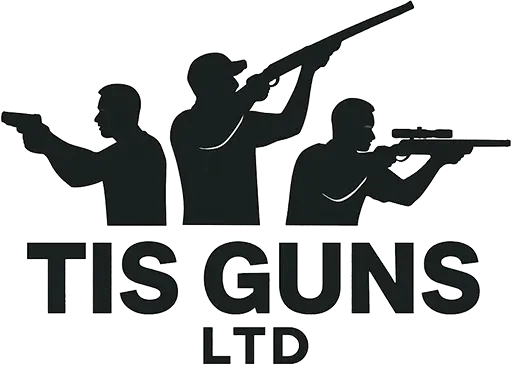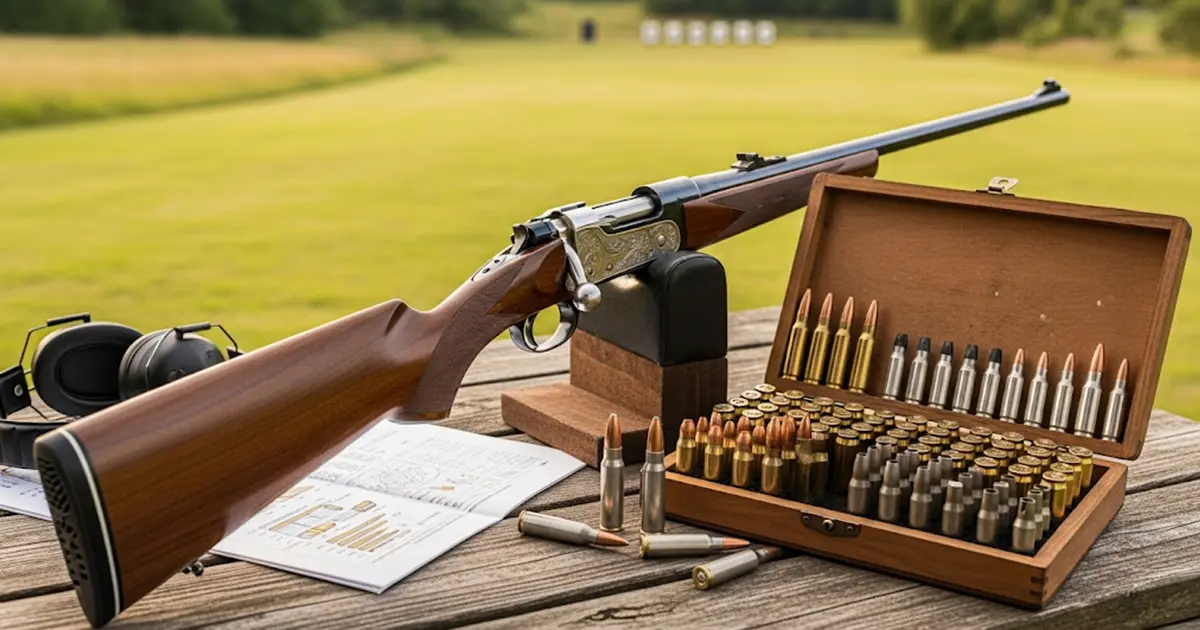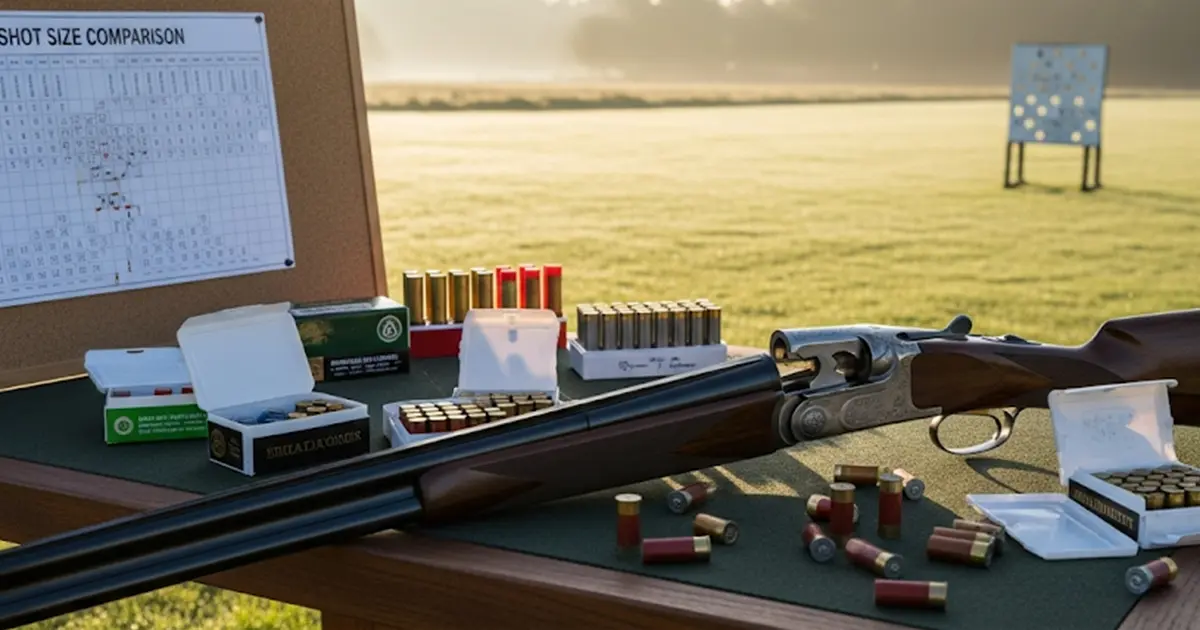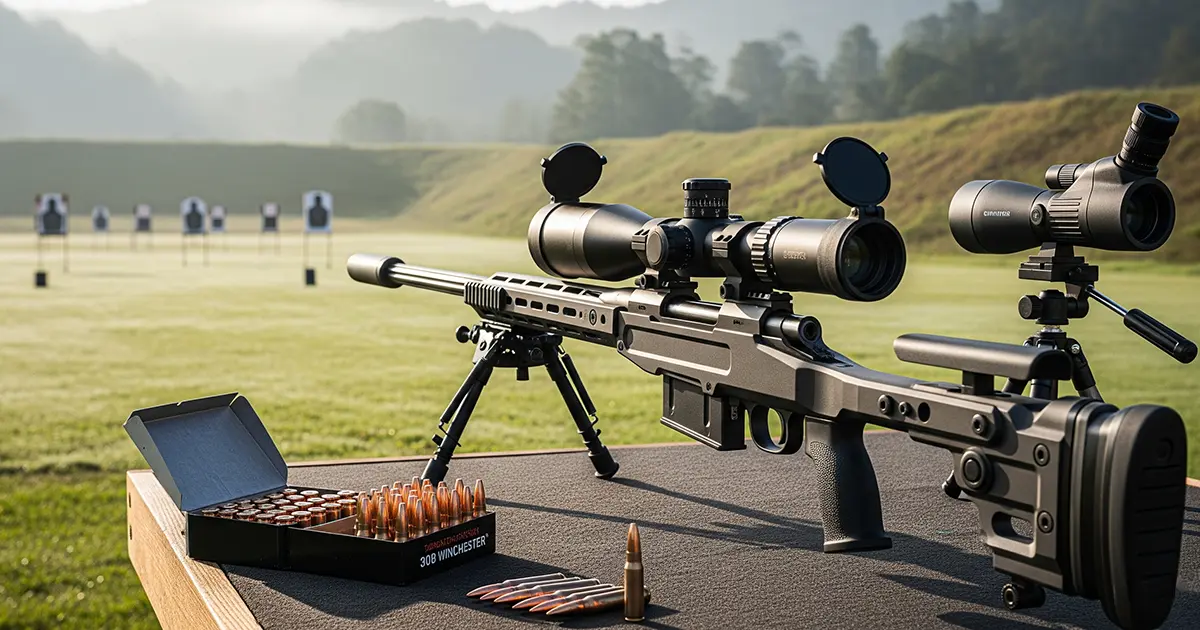Selecting the correct ammunition is one of the most important decisions any shooter can make. Whether you are stalking deer in the Lincolnshire Wolds, shooting clays at your local club, or controlling vermin on farmland, the right calibre will influence your accuracy, effectiveness, comfort, and legal compliance. With so many options available, it is easy to feel overwhelmed. This guide will help you make informed choices, combining practical advice, expert insight, and clear examples from the field.
Matching calibre to purpose
Every shooting discipline has its own demands. Using the wrong calibre can lead to poor performance, excessive recoil, or even breaches of UK law.
David Bellamy, Managing Director of The Instinctive Shooter, puts it simply:
“If you match your calibre to the quarry, your rifle, and your shooting distance, you will shoot better, enjoy it more, and stay on the right side of the law.”
Driven game and stalking
For deer stalking in England and Wales, you will need a calibre that meets the minimum legal requirements: at least .240 calibre and 1,700 ft-lb of muzzle energy for larger deer species. The ever-popular .243 Winchester is a common choice for smaller species such as roe, while many stalkers prefer the .308 Winchester for larger deer due to its proven stopping power and availability of factory ammunition.
Pest and vermin control
For rabbits and foxes, smaller calibres such as .17 HMR or .22 Hornet offer flat trajectories and low recoil, making them ideal for precise, humane shots at moderate ranges. They are also relatively inexpensive to shoot, which matters when high volumes of ammunition are needed.
Target shooting and practice
If your primary goal is range work or honing your skills, .22 Long Rifle remains unbeatable for low cost, low recoil, and wide availability. It is also a great choice for younger or smaller-framed shooters building confidence.
Understanding ballistic performance
Ballistics can sound complex, but in practice it comes down to how your bullet behaves in flight and how it transfers energy on impact.
- Ballistic coefficient (BC): A higher BC means better aerodynamics, retaining velocity over longer distances and resisting wind drift.
- Muzzle velocity: Higher velocity flattens your trajectory, reducing the amount you need to adjust for bullet drop.
- Energy transfer: The ability of the bullet to deliver sufficient impact to humanely dispatch your quarry.
As David notes, “Figures on paper are only part of the story. Field testing and matching the load to your rifle make the real difference.”
At The Instinctive Shooter, we can help you interpret ballistic data and, where possible, test suitable options before you commit to bulk purchases.
Balancing performance with cost
A common mistake is to buy premium ammunition for every purpose, even when it is not necessary. While top-tier factory loads or carefully handloaded rounds can yield the tightest groups, many shooters find that a mid-range option offers nearly identical field performance at a fraction of the cost.
For example, a box of premium .308 hunting rounds might cost £50, while a quality mid-range load can be found for £30. If you shoot 200 rounds a year, that is a saving of £400 without a meaningful loss of effectiveness.
We can advise on the most cost-effective loads for your needs and even supply reloading equipment for those who want complete control over performance and price.
Recoil and shooter comfort
Recoil management is often overlooked by new shooters. An unnecessarily powerful calibre can make shooting unpleasant, leading to flinching and reduced accuracy.
As David explains, “There is no shame in choosing a calibre you can handle comfortably. Confidence behind the rifle is worth far more than raw power.”
Trying different calibres at your local club or during a store demonstration can help you find a balance between performance and comfort.
Staying within the law
UK firearms law sets strict limits on what calibres can be used for specific quarry. For example:
- Roe deer in Scotland require a minimum calibre of .22 with 1,000 ft-lb of muzzle energy, but in England and Wales the minimum is .240 calibre and 1,700 ft-lb for larger species.
- Certain calibres may be restricted for use on public ranges.
- Lead-free ammunition is increasingly required for game shooting in some areas.
The Instinctive Shooter keeps up to date with all legal changes and can help ensure your choice is compliant for your shooting location and target species.
Lead-free and future-proofing your choice
With growing environmental considerations and changes to ammunition regulations, many shooters are exploring lead-free options. Copper and other non-toxic bullets have come a long way in recent years, with comparable accuracy and terminal performance to traditional lead loads.
We stock and test lead-free ammunition across multiple calibres, so you can make an informed switch without compromising on results.
Practical tips for choosing your calibre
- Start with your purpose: Match calibre to quarry and typical shooting distances.
- Consider recoil: Choose something you can shoot accurately and comfortably.
- Factor in cost: Premium is not always necessary for effective shooting.
- Know the law: Stay within UK regulations for calibre and energy requirements.
- Test where possible: Try before you buy to ensure compatibility with your firearm.
Final word from David Bellamy:
“Your choice of ammunition is as important as your choice of rifle. Get it right, and every shot becomes more predictable, more enjoyable, and more effective. Get it wrong, and you are fighting your kit rather than working with it. We are here to make sure you get it right.”
Your Ammunition Questions Answered
What Is The Best Calibre For Deer Stalking In The UK?
For most deer species in England and Wales, .243 Winchester is a popular all-rounder, while .308 Winchester is a top choice for larger deer. Always check the legal minimum calibre and muzzle energy for your location and target species.
Is Lead-Free Ammunition As Effective As Traditional Lead Rounds?
Modern lead-free ammunition, such as copper bullets, can match or even exceed the performance of lead in terms of accuracy and terminal effect. The key is choosing a load matched to your rifle and purpose.
How Much Difference Does Bullet Weight Make?
Heavier bullets tend to retain more energy and penetrate better, while lighter bullets usually travel faster and have a flatter trajectory. Your choice should depend on the quarry, distance, and wind conditions.
Can I Use The Same Ammunition For Both Target Shooting And Hunting?
It is possible, but hunting rounds are designed for terminal performance, while target loads prioritise consistency and precision. Many shooters use separate loads to optimise results in each setting.
Does Barrel Length Affect My Choice Of Ammunition?
Yes, shorter barrels often result in lower muzzle velocity, which can affect bullet drop and energy. Selecting ammunition that performs well from your specific barrel length can improve accuracy and effectiveness.
Is Reloading Ammunition Worth It?
For high-volume shooters or those seeking custom performance, reloading can save money and improve consistency. It does require an initial investment in equipment and careful attention to safety.




